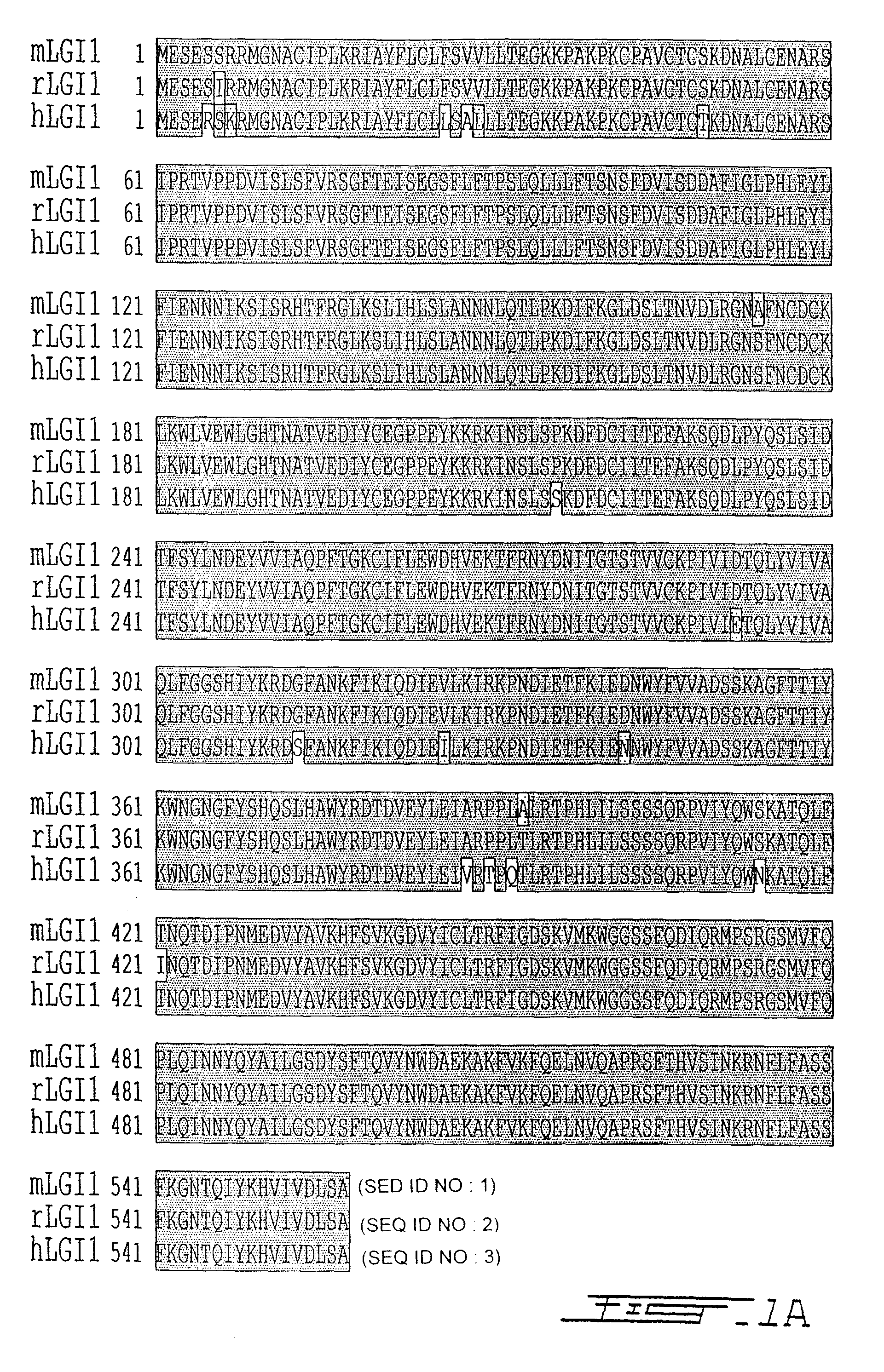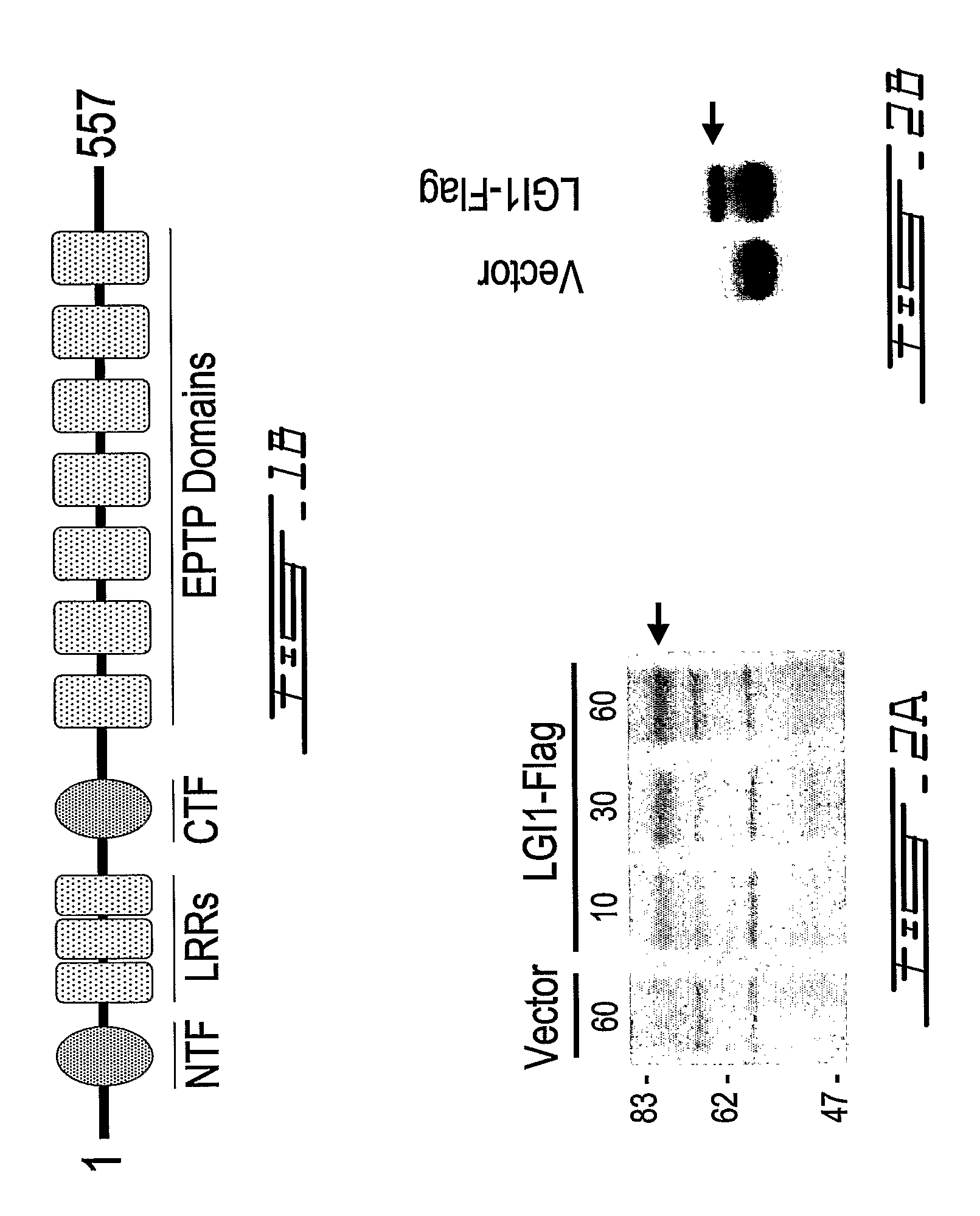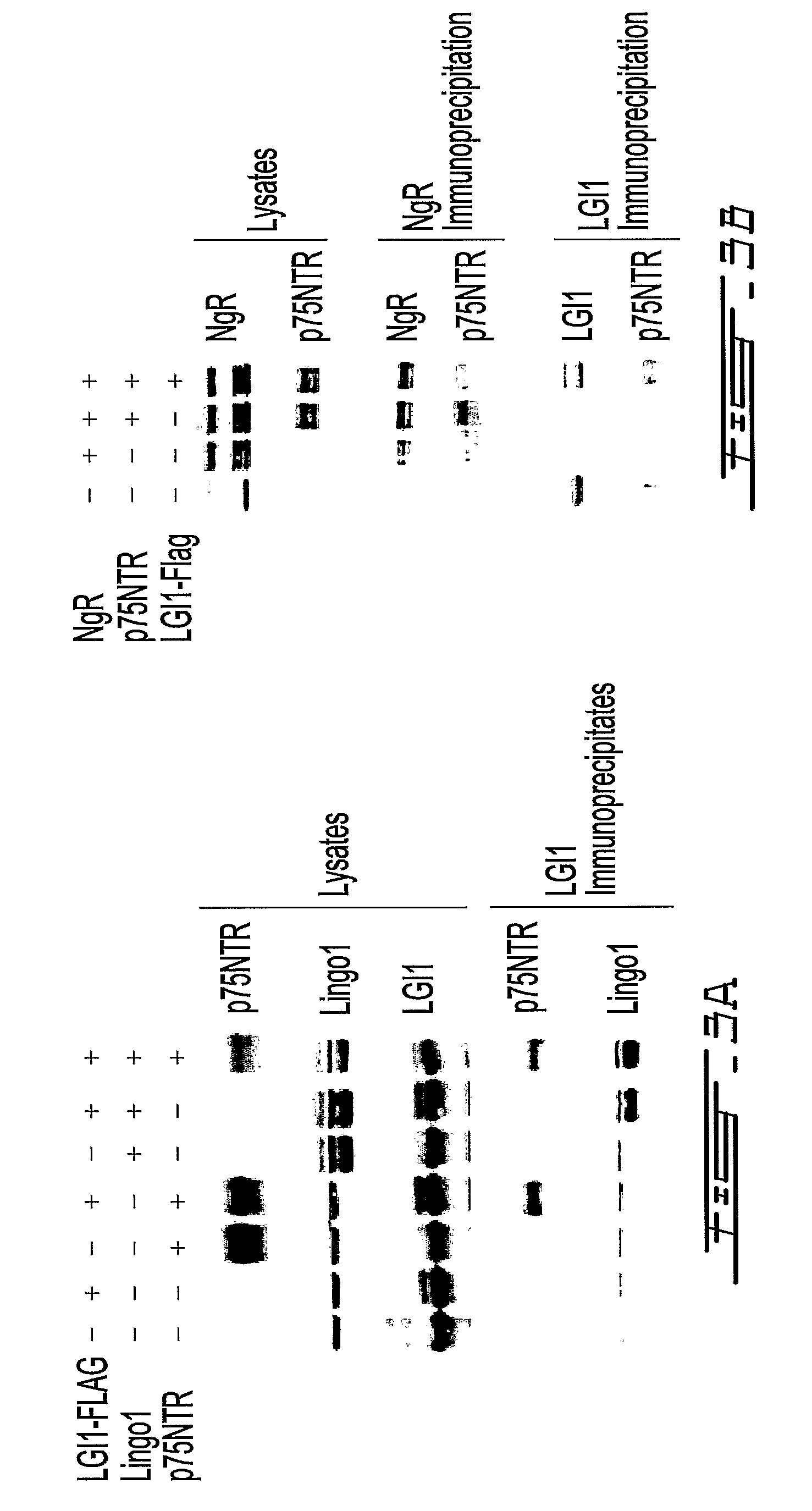LGI, LINGO and p75NTR family members: novel modulators of neuronal growth
a neuronal growth and p75ntr technology, applied in the field of neuronology, can solve the problems of loss of functional connections, permanent paralysis and sensory loss, demyelination, etc., and achieve the effects of promoting myelination of neurons, enhancing the ability of neurons of the central nervous system to regenerate, and inhibiting the collapse of growth cones
- Summary
- Abstract
- Description
- Claims
- Application Information
AI Technical Summary
Benefits of technology
Problems solved by technology
Method used
Image
Examples
Embodiment Construction
Definitions
[0030]Unless defined otherwise, the scientific and technological terms and nomenclature used herein have the same meaning as commonly understood by a person of ordinary skill in the art to which the present invention belongs. Generally, the procedures for cell cultures, infection, molecular biology methods and the like are common methods used in the art. Such standard techniques can be found in reference manuals such as for example Sambrook et al. (1989, Molecular Cloning—A Laboratory Manual, Cold Spring Harbor Laboratories) and Ausubel et al. (1994, Current Protocols in Molecular Biology, Wiley, New York).
[0031]All publications mentioned herein are hereby incorporated by reference for the purpose of disclosing and describing the particular materials and methodologies for which the reference was cited. The publications discussed herein are provided solely for their disclosure prior to the filing date of the present application. Nothing herein is to be construed as an admi...
PUM
| Property | Measurement | Unit |
|---|---|---|
| affinity | aaaaa | aaaaa |
| soluble | aaaaa | aaaaa |
| stability | aaaaa | aaaaa |
Abstract
Description
Claims
Application Information
 Login to View More
Login to View More - R&D
- Intellectual Property
- Life Sciences
- Materials
- Tech Scout
- Unparalleled Data Quality
- Higher Quality Content
- 60% Fewer Hallucinations
Browse by: Latest US Patents, China's latest patents, Technical Efficacy Thesaurus, Application Domain, Technology Topic, Popular Technical Reports.
© 2025 PatSnap. All rights reserved.Legal|Privacy policy|Modern Slavery Act Transparency Statement|Sitemap|About US| Contact US: help@patsnap.com



